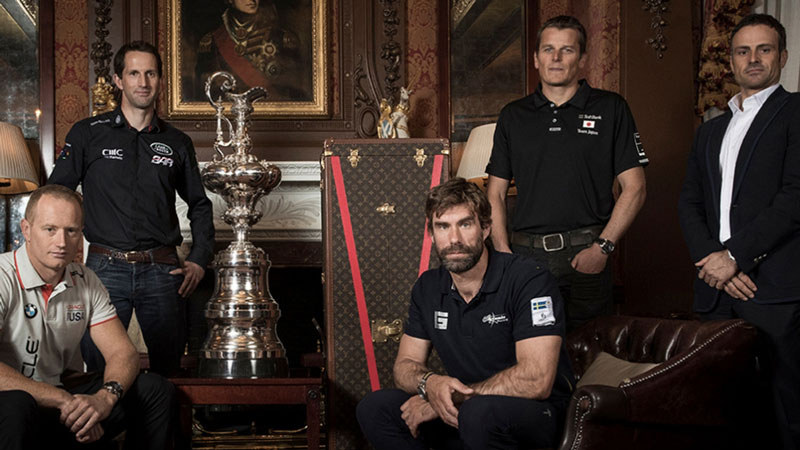
America’s Cup Agreement

The five skippers shown in the above photo represent the teams that signed the new ‘Framework Agreement’ for the next two editions of the America’s Cup. But wait — aren’t there six teams? Who’s missing? Conspicuous by its absence is Emirates Team New Zealand.
Richard Gladwell, the New Zealand-based editor of Sail-World, wrote in a LinkedIn discussion group that the Framework’s "major flaw is that the DoG [Deed of Gift] is about Clubs being entered in the Cup with responsibilities under the DoG. The Framework is geared around teams not Clubs. The Defender is the Club charged with organising the event and underwriting the cost of that. Whether the Defending Club/Trustee will be happy about its liability and responsibilities being in the hands of a Committee in which they have no right of approval/veto is another matter. Also the 2019 venue is at the call of the 2017 winner, but under the Framework the venue has to be ready inside two years, which given that it has taken 4-5 years each time there has been a change of venue in the past seems to be a big ask. The convenient option would seem for it to stay in Bermuda."
With Oracle Team USA defending the America’s Cup 35 in Bermuda, more than a continent away from its associated club, San Francisco’s Golden Gate Yacht Club, it’s already about the teams, not the clubs. Was the above agreement presented at GGYC in S.F.? Nope, London, during a press conference at the House of Garrard, where the America’s Cup trophy was crafted in 1848.
The framework agreement and agreed future protocol binds the signatories to deliver AC36 and AC37 under the following terms:
- The America’s Cup will be on a two-yearly cycle for AC36 (2019) and AC37 (2021).
- The America’s Cup World Series (ACWS) will start, at the election of the defender, as soon as Q4 2017. Venues, sponsors and media partners will be approached over the next six months to secure up to 12 international events over the next two years.
- The first year of the ACWS will be raced in AC45F foiling catamarans – the same boats used in ACWS in the 35th America’s Cup.
- The second year will see a transition to the America’s Cup Class (ACC) boats, the same technically sophisticated class of boats raced in Bermuda in 2017 (with a slight rule modification to extend the wind range in which they can race to 4-26 knots). After this transition to the America’s Cup Class (ACC), the AC45Fs will be retired from the America’s Cup competition and the ACC boats will be the only boats raced.
- The America’s Cup World Series (ACWS) will culminate with a final event at the venue for the next America’s Cup and the final standings from the America’s Cup World Series (ACWS) will be used to qualify teams for the America’s Cup Challenger Playoffs.
- The America’s Cup Challenger Finals and America’s Cup Match will be held in 2019 in a venue selected by the winner of the 35th America’s Cup.
- To reduce costs, teams will not be permitted to build, test or train on AC45 surrogate boats as they have in this cycle of the America’s Cup.
- This above will repeat for AC37, with the exception that all racing will take place in America’s Cup Class (ACC) boats.
Larry Ellison, founder of the America’s Cup Defender, Oracle Team USA, said, "People who want to enter this race now know how much it will cost, what kind of boat they need to build, and that the rules can’t change on them. They are now able to plan ahead, build a boat, build a team, and come out and compete for their country." But what happens if the Kiwis win AC35?
